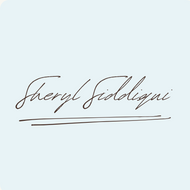As someone who navigates the intricate maze of bipolar type two with mixed episodes, I've grown intimately familiar with the rollercoaster ride of emotions that life can offer, my mental health journey has been far from easy. However, amidst the turbulence, there's been a constant source of solace: art.
Art, in all its forms, has become my sanctuary, my refuge from the storm raging within. Whether it's the tactile sensation of a pencil scratching against paper in a sketchbook or the fluid strokes of a digital brush on my iPad, the act of creating art has an almost magical ability to soothe my troubled mind.
I've often found myself lost in a meditative flow state when immersed in the process of creation. It's as if the world around me fades into the background, and all that matters is the canvas before me, waiting to be transformed. In those moments, the incessant chatter of my thoughts quiets down, and I find a sense of peace that eludes me in the outside world.
One of the most profound aspects of art therapy for me has been its ability to provide a welcome distraction from my current state of mind. When I'm knee-deep in colors, mixing and blending to create the perfect hue, I'm not consumed by the weight of my emotions or the challenges that accompany my condition. Instead, I'm fully present in the moment, embracing the joy that comes from expressing myself creatively.
Color, in particular, holds a special significance in my artistic journey. The vibrant hues on my palette have a way of lifting my spirits and infusing my soul with warmth. Each color tells a story and evokes a myriad of emotions within me.
But perhaps the most transformative aspect of art therapy is its ability to empower me. In a world where I often feel powerless against the forces of my own mind, art gives me a sense of agency. With every stroke of the brush, I reclaim a piece of myself and assert my presence in the world.
Of course, I'm not naive enough to believe that art is a cure-all for my mental health struggles. It's merely a tool—a powerful one, to be sure—but a tool nonetheless. Yet, in its simplicity and beauty, art offers me a glimmer of hope and a respite from the darkness that threatens to consume me.
So, as I continue on my journey towards mental wellness, I take solace in the knowledge that I have art by my side, a faithful companion in times of need. And for that, I am eternally grateful.
Despite the tumultuous nature of my mental health journey, one thing remains constant: my love for creating art. Regardless of the mood I'm in, the act of bringing beauty into the world through art never fails to uplift my spirits.
In those moments when the weight of my emotions threatens to overwhelm me, I find solace in the simplicity of creating art. Even the smallest doodle in my sketchbook or a quick digital sketch on my iPad has the power to bring a sense of calm and joy to my soul. It's as if, in those fleeting moments of creation, I am reclaiming a piece of myself and pushing through the temporary storm.
During times when I'm feeling less than my best, I often turn to smaller works of art as a form of self-care. Whether it's a simple line drawing or a quick color study, these smaller projects allow me to engage with my creative side without feeling overwhelmed by the magnitude of a larger piece. And in the process, I find a sense of peace and contentment that helps me navigate the rough patches with a bit more grace.
As someone who's experienced the highs and lows of mental illness firsthand, I know that I'm not alone in this struggle. While I may not be a certified professional, I speak from a place of empathy and understanding, rooted in years of lived experience. I've faced the disappointments, the setbacks, and the moments of acceptance that come with the territory of mental illness. And through it all, art has been my steadfast companion, guiding me through the darkest of times and reminding me that there is beauty to be found even in the midst of chaos.
I urge anyone who's grappling with their own mental health challenges to find solace in whatever form of self-expression speaks to them. Whether it's through art, music, writing, or any other creative outlet, know that you have the power to reclaim joy and find peace within yourself. And remember, you are not alone on this journey. Together, we can navigate the ups and downs, finding strength in our shared experiences and the beauty we create along the way.

